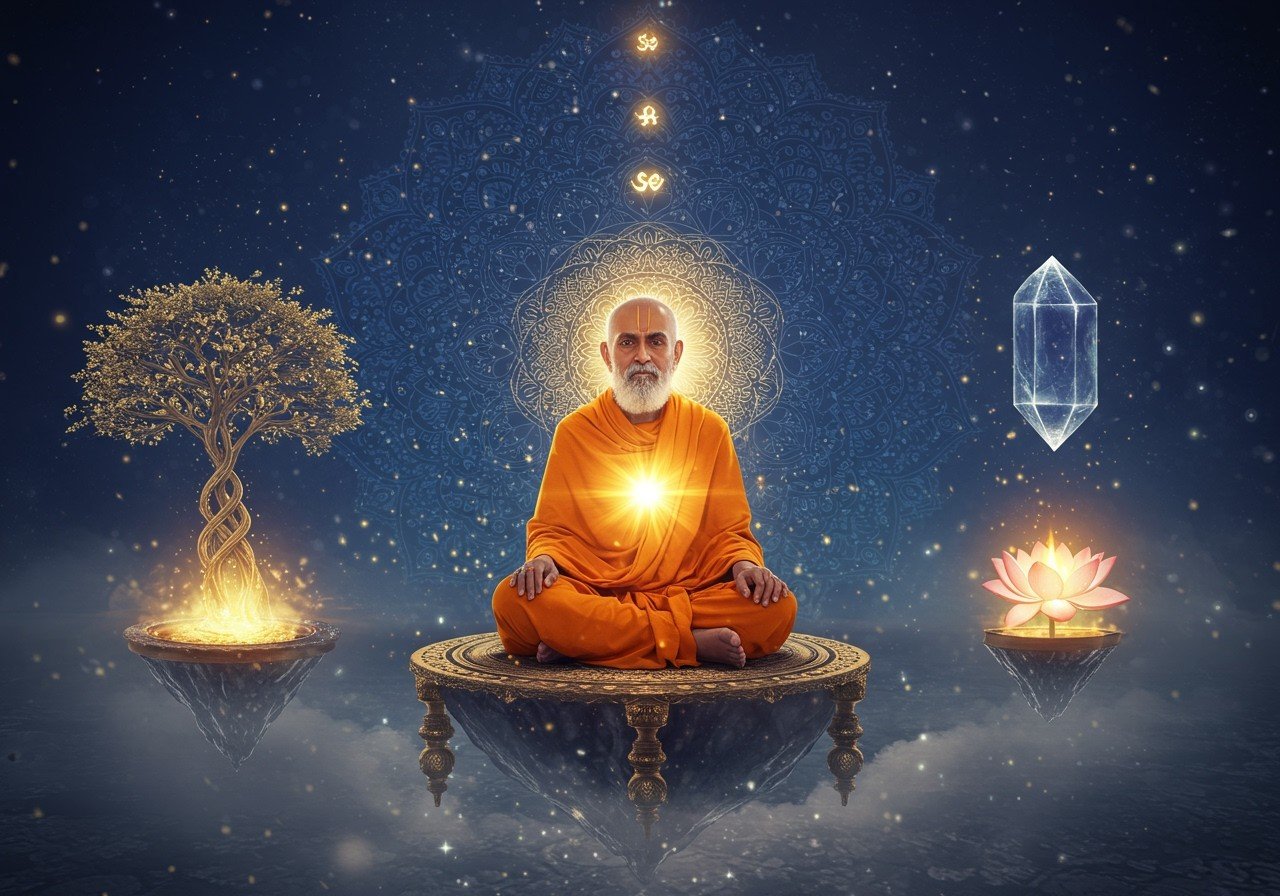
Shuddhadvaita Vedanta, also known as pure non-dualism, offers a unique and profound perspective within Indian spiritual traditions. It emphasizes a deep connection with the divine and the importance of authentic devotion. This exploration delves into its origins, core principles, and enduring influence on those seeking a personal relationship with God.
What is Shuddhadvaita Vedanta?
Shuddhadvaita, meaning “pure non-dualism,” is a distinct school of Vedanta philosophy. Unlike Advaita Vedanta, it emphasizes the soul’s inherent unity with God through loving devotion (Bhakti). It views the material world as a real manifestation of Brahman, not an illusion. This perspective, known as “pure monism,” fosters a personal connection with the divine.
The Origins of Shuddhadvaita: Vallabhacharya’s Vision
Shuddhadvaita was founded by Vallabhacharya (1479-1531 CE), a revered theologian and philosopher. His teachings established the Pushti Marg, or “path of grace,” which centers on devotion to Lord Krishna. Vallabhacharya’s profound insights continue to resonate within spiritual practices today.
You can find a wide selection of resources related to Lord Krishna and the Pushti Marg tradition at poojn.in, India’s leading store for cultural goods and services.
Understanding the Meaning of Shuddhadvaita
The term “Shuddhadvaita” combines “Shuddha” (pure) and “Advaita” (non-dual). This reflects the philosophy’s emphasis on the pure, unblemished relationship between the individual soul (Atman) and Brahman (the ultimate reality). It highlights the importance of purity in devotion and recognizing the divine presence in all aspects of life. Explore our collection of spiritual books and resources at poojn.in to deepen your understanding.
Core Principles of Shuddhadvaita Vedanta
- Brahman as the Ultimate Reality: Shuddhadvaita posits that Brahman is pure, undivided, and the source of all existence. The universe is not an illusion but a real manifestation of Brahman’s power, a concept that distinguishes it from Advaita Vedanta. Explore our collection of Bhagavad Gita to learn more about this.
- The Individual Soul (Atman) and Brahman: The Atman is considered a part of Brahman, like a spark from a fire, sharing the same essence. The difference lies in the manifestation of divine qualities, with some being limited or obscured in the individual soul. God is the whole, and the Atman is a part.
- The Path to Liberation (Moksha): Liberation is achieved through unwavering devotion (Bhakti) to Krishna, who is seen as the supreme manifestation of Brahman. This devotion is not merely ritualistic but a deep and abiding love for God, cultivated through God’s grace. This grace purifies the soul and removes obstacles on the path to liberation. Learn more about Bhakti Yoga, a path to divine love and devotion.
- The Role of Maya: Unlike Advaita Vedanta, Shuddhadvaita does not view Maya as an illusion that veils Brahman. Instead, Maya is considered the divine power of Ishvara (the Supreme Lord) through which the universe manifests. It is the power of Brahman that allows for the appearance of multiplicity and change within the unchanging reality of Brahman.
Key Differences from Advaita Vedanta
While both Shuddhadvaita and Advaita Vedanta belong to the Vedanta tradition, they differ in key aspects:
- Nature of the World: Shuddhadvaita views the world as a real manifestation of Brahman, while Advaita Vedanta considers it an illusion (Maya).
- Relationship with Brahman: In Shuddhadvaita, the individual soul is a part of Brahman, whereas in Advaita Vedanta, the Atman is ultimately identical to Brahman.
- Role of Maya: Shuddhadvaita sees Maya as the power of God, while Advaita Vedanta views Maya as the illusion that hides the true nature of reality.
The Enduring Legacy of Shuddhadvaita
Shuddhadvaita has profoundly influenced Indian culture and spirituality. It has shaped the Pushti Marg community and inspired expressions of devotion through music, art, and dance. Vallabhacharya’s teachings continue to guide seekers on their spiritual journey today, particularly among those who value the traditional paths of Bhakti. Find exquisite devotional items and puja accessories at poojn.in to enrich your spiritual practices.
Practicing Shuddhadvaita in Contemporary Life
Incorporating Shuddhadvaita principles into modern life can involve:
- Daily Prayers and Chanting: Regular prayers and chanting deepen the connection with Krishna and cultivate devotion. Poojn.in offers a wide variety of puja items to support your daily practice.
- Meditation and Reflection: Meditation helps to quiet the mind and focus on the divine presence, fostering a deeper understanding of Shuddhadvaita principles.
- Community Engagement (Satsang): Participating in spiritual gatherings provides support and shared experiences on the path of devotion. Explore the power of Japa, the repetition of sacred names.
Shuddhadvaita Vedanta offers a path to spiritual fulfillment by emphasizing the inherent connection between the individual soul and the divine. It invites us to embrace pure devotion and recognize the divine presence in every aspect of existence.
Poojn.in provides a comprehensive selection of sacred threads, murtis, and other essential items to support your spiritual journey. Visit our website or call us for personalized assistance.


